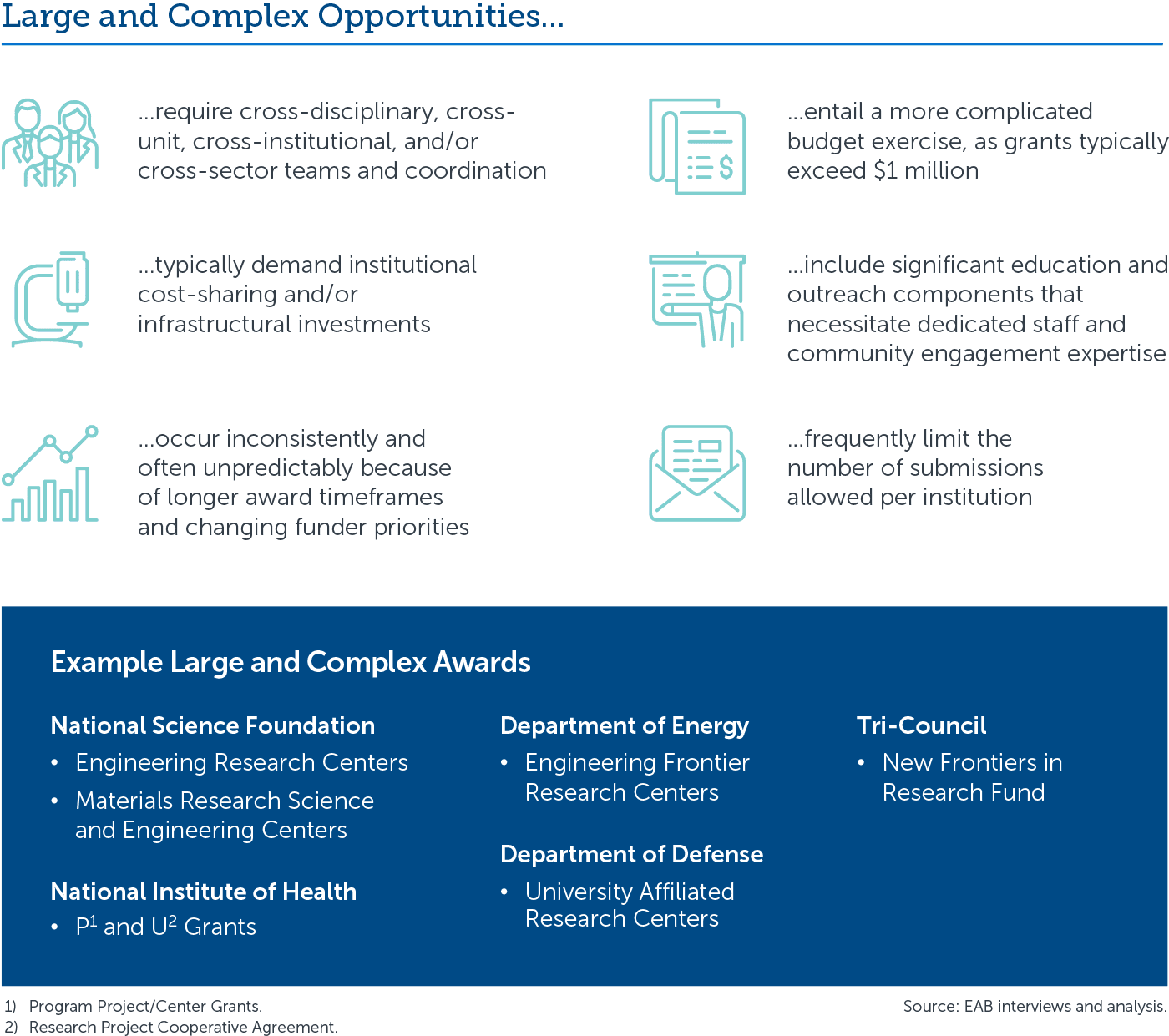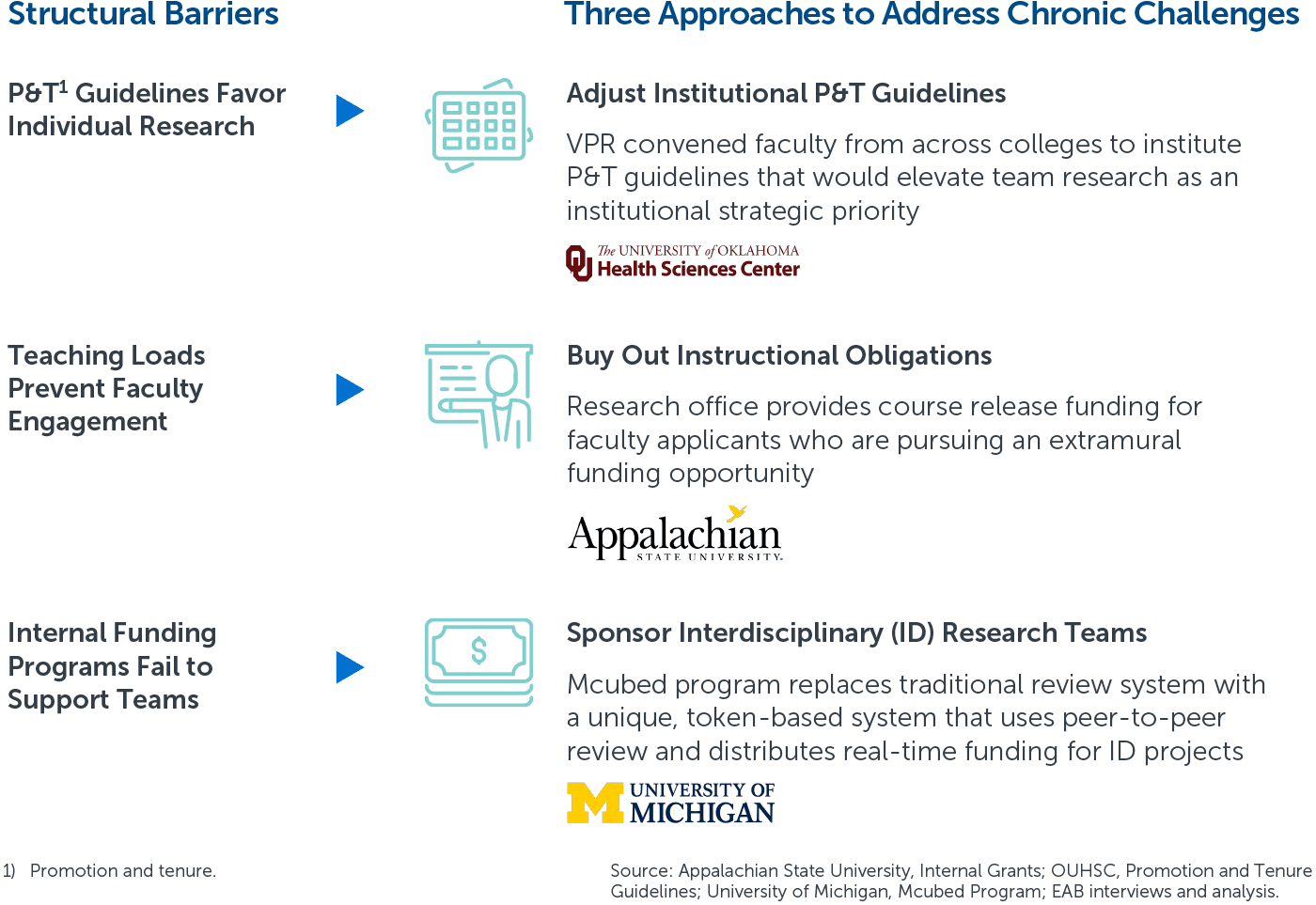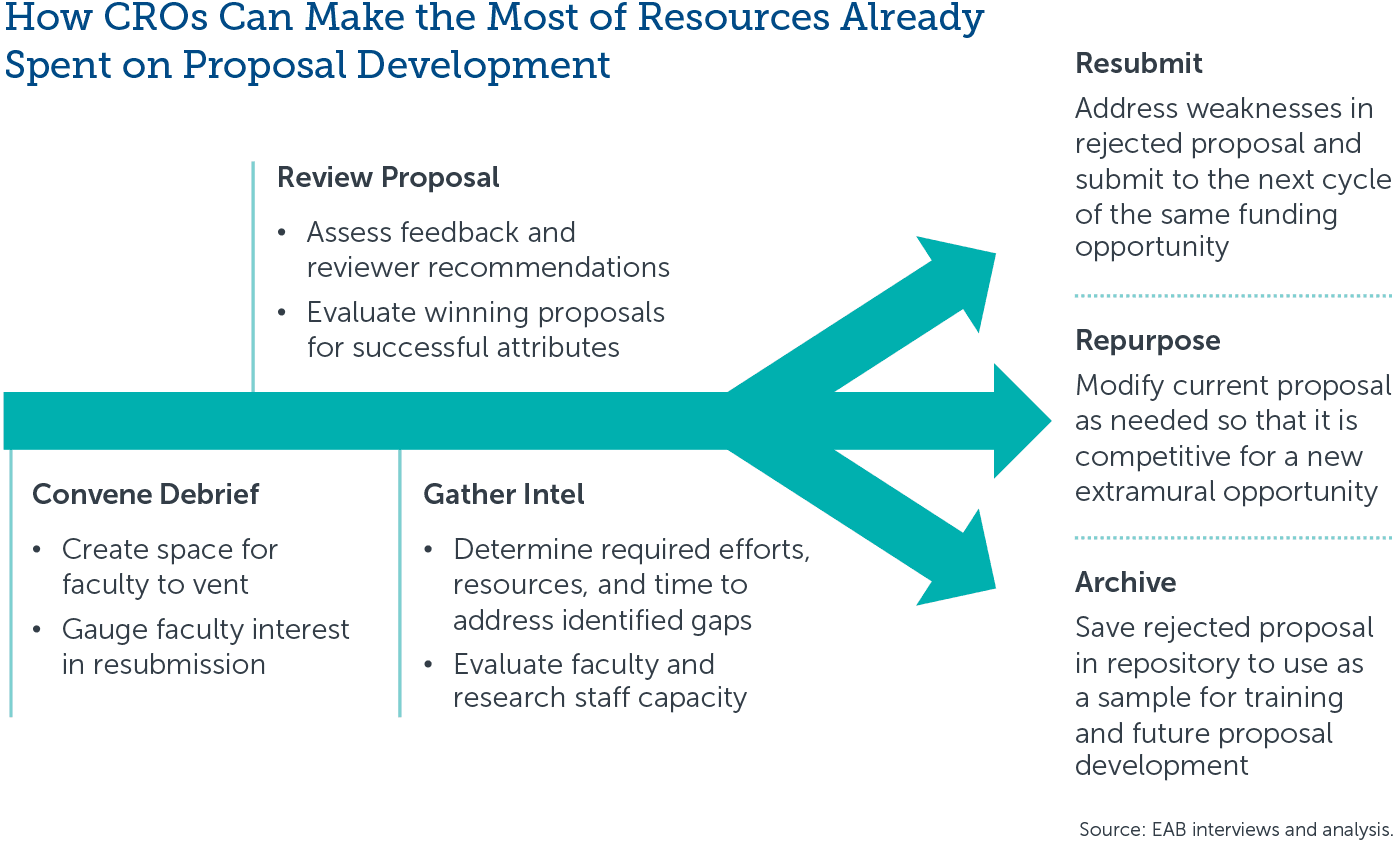Use Research Development to Pursue Large and Complex Federal Funding Opportunities
Federal agencies are shifting funding toward large and complex (L&C), multidisciplinary, and team-based opportunities. These awards offer new avenues for research growth, but they have different requirements than traditional individual investigator grants. As a result, universities must update their research development strategy to proactively position themselves as competitors, form collaborative teams, and strengthen written proposals.


L&C opportunities are critical for growing the enterprise
Federal agencies have stopped making large, net-new investments in individual investigator grants. Instead, they have opted to invest more in L&C awards. This means universities must develop a strategy to pursue these opportunities or otherwise risk stagnating federal research expenditures.


I'd love to have a culture where every person has a grant, but we aren't going to reach $300 million on a single-PI portfolio.
Vice President, Research
Public R1 University
Proactively build relationships with prospective funders and collaborators
Universities must begin positioning themselves as competitors for L&C awards several years prior to RFP release. This helps universities ensure they are top-of-mind when the agency writes the RFP and reviews proposals. Two of the most important positioning activities are developing funder relationships and strategic partnerships.
- Use multiple levers to cultivate faculty and staff relationships with federal agencies
- Form partnerships with institutions that complement your strengths or compensate for your weaknesses

Address structural barriers to faculty collaboration
L&C opportunities require universities to form interdisciplinary faculty teams. However, structural barriers frequently deter faculty from collaborating. The three biggest barriers are outlined below, along with examples of how research leaders have addressed them.


Tailor research office resources to support teams
Although research leaders have invested more in research support over the last decade, may have struggled to create dedicated resources for research teams. This discourages faculty collaboration and prevents teams from effectively managing the proposal development process.

Faculty lack the connections and opportunities needed to form competitive teams on their own
Guide the team formation process through targeted programs
Faculty are not interested in or do not possess the skills required to lead large research teams
Identify and train interdisciplinary team leaders
Faculty are deterred by the administrative burden associated with managing L&C proposal development
Provide project management resources
Intervene earlier in the proposal development process to increase submission quality
L&C proposals require more planning, stakeholder coordination, and non-technical components than individual investigator awards. Fierce competition for these awards also means agency reviewers are looking for any reason to reject without review—even a typo or alignment issue. As a result, universities cannot afford for teams to draft proposals last minute. Instead, they can use the following proactive proposal interventions to provide teams with earlier support.
- Establish an internal notification of intent to submit policy
- Build a repository of large and complex proposal templates and examples
- Coordinate targeted proposal reviews prior to sponsor submission
- Provide graphic support and resources for faculty teams
- Revamp your limited submission policy and process

Choose a response strategy for rejected proposals
Most L&C proposals are rejected on their first submission. This leads most universities to abandon proposals they invested extensive resources in developing. Instead, research offices should consider other ways to utilize rejected proposals. Ultimately, they have three options: resubmit, repurpose, or archive.


This resource requires EAB partnership access to view.
Access the roadmap
Learn how you can get access to this resource as well as hands-on support from our experts through Strategic Advisory Services.
Learn More